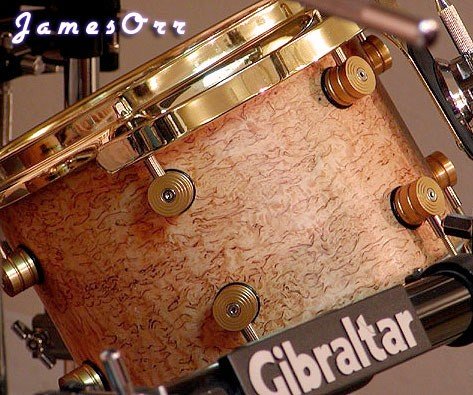[QUOTE=Kristopher10] Michael,
Thanks for the input.. very helpful. I wonder about a drum analogy...if the head of the drum were seated on foam, sponge, cat fur, etc. (something not very dense or "musical"), I imagine it would be very dead sounding and not as loud as a normal drum head seated on the wood of the shell itself. Even though the edge of the drum head is mostly inactive, it would still have an effect on the tone/volume. I get the feeling I am now visualizing this correctly  . If not, please advise.[/QUOTE] . If not, please advise.[/QUOTE]
While I hesitate to get into a better/best discussion, my building style (much of it borrowed from Ervin Somogyi) is to make the rims as absolutely stiff as possible for this very reason.
Therefore, I laminate my sides and use "capped linings" resulting in a rim so stiff that there is 0 flex, and 0 movement. You could literally build outside the mold once the blocks are glued in place.
The thought (and again YMMV) is that the stiff rims reduse dampening at the edges.
So given that would solid linings be "better"? Perhaps but I can tell you for sure there is a big difference in stiffness going from triangle linings to reversed linings, and another big step going to capped linings.
|
 (it is actually a very nice piece of lumber, perfectly quartered the entire length). I have read some previous threads about using solid linings and was wondering if anyone has used maple. My thinking is that I want to have a solid/rigid/dense area for the soundboard to be glued on to facilitate vibration. Do softer woods inhibit/dampen the sound of the instrument?
(it is actually a very nice piece of lumber, perfectly quartered the entire length). I have read some previous threads about using solid linings and was wondering if anyone has used maple. My thinking is that I want to have a solid/rigid/dense area for the soundboard to be glued on to facilitate vibration. Do softer woods inhibit/dampen the sound of the instrument?
 . If not, please advise.
. If not, please advise.




 .
.
 , but well worth the effort in my opinion. I am kinda doing a "capped" solid lining with the cap being made from brazilian rosewood. Not for strength, but just for aesthetics. It adds a nice finished look to the inside. What was your experience with Maple? Not the easiest stuff to make linings with, huh?
, but well worth the effort in my opinion. I am kinda doing a "capped" solid lining with the cap being made from brazilian rosewood. Not for strength, but just for aesthetics. It adds a nice finished look to the inside. What was your experience with Maple? Not the easiest stuff to make linings with, huh?
